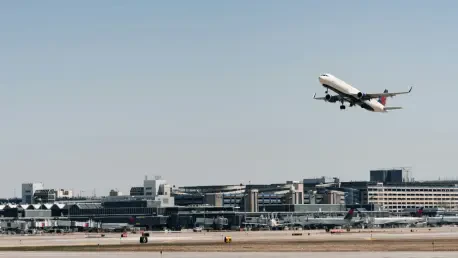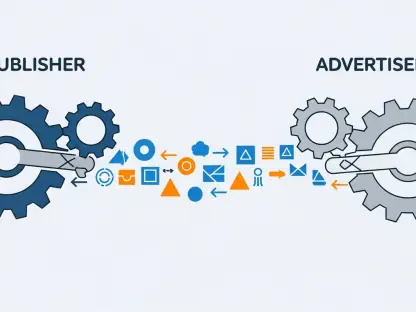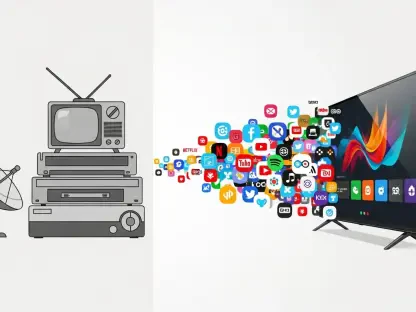As air travel becomes increasingly digitized, the demand for in-flight Wi-Fi continues to surge. The possibility of providing this service free of charge is gaining momentum among major U.S. airlines. With notable advancements and announcements from aviation companies, the landscape of free in-flight internet is set to undergo significant changes by 2026. This article delves into the current status and future expectations regarding free Wi-Fi availability on major U.S. airlines, alongside the technological collaborations and strategic loyalty programs driving these developments.
Current Providers
Delta Air Lines and JetBlue
Delta Air Lines and JetBlue are currently at the forefront of offering free Wi-Fi service to their passengers. Delta Air Lines has implemented a unique model where passengers can access complimentary Wi-Fi by enrolling in the SkyMiles loyalty program. This strategic move not only provides connectivity but also encourages passengers to become part of Delta’s frequent flyer community. In contrast, JetBlue takes a more inclusive approach by offering free Wi-Fi to all passengers without any prerequisites such as membership or login. This simplified access has made JetBlue a favorite among travelers who prioritize digital connectivity.
The differentiation in access strategies between Delta and JetBlue underscores each airline’s broader business goals. Delta’s reliance on the SkyMiles program seeks to enhance customer retention by making loyal passengers feel valued through added perks. Meanwhile, JetBlue’s hassle-free access is geared towards improving overall passenger satisfaction and aligning with a customer-friendly image. The availability of free Wi-Fi on these airlines sets a benchmark that others are gradually working to achieve, highlighting a trend toward complimentary in-flight internet services across the industry.
Service Quality and Conditions
While the availability of free Wi-Fi on Delta and JetBlue flights is a significant step forward, the quality of the service remains a crucial factor for passenger satisfaction. Delta claims that its free Wi-Fi, powered by Viasat, Intelsat, and Gogo, is capable of handling browsing and streaming activities efficiently. However, the service comes with conditions such as a limit of one device per SkyMiles account login, which may be restrictive for passengers carrying multiple devices. Additionally, the performance of the Wi-Fi can vary depending on flight routes and the type of aircraft used.
JetBlue’s Wi-Fi service, provided by Viasat, offers a robust package supporting activities such as web browsing, email, messaging, and video streaming. However, despite promises of high performance, some passengers have reported inconsistent connectivity, particularly on long-haul flights. The reliability of the Wi-Fi can be affected by factors like weather conditions and the number of concurrent users. Addressing these technical challenges is critical for both airlines to ensure a seamless internet experience for all passengers, setting the standard for what in-flight Wi-Fi should offer in terms of speed, reliability, and accessibility.
Future Providers
United Airlines and Free Wi-Fi by 2026
United Airlines has made public its ambitious plans to roll out free Wi-Fi beginning mid-year. This phased approach will initially focus on regional jets, gradually extending to the entire fleet by 2027. The new service will be integrated with United’s MileagePlus loyalty program, requiring passengers to be members to access free Wi-Fi. This strategy is similar to Delta’s, aiming to boost loyalty program enrollments while offering enhanced passenger experiences.
United’s choice of utilizing SpaceX’s Starlink for its Wi-Fi service marks a significant leap in in-flight connectivity technology. Starlink’s satellite-based internet promises low latency and high-speed connectivity, which is expected to support data-intensive activities such as streaming and real-time communication. This advancement positions United Airlines to potentially offer one of the best in-flight internet services in the industry. The phased rollout ensures a structured implementation, allowing the airline to address any technical challenges and refine the service before achieving full coverage.
American Airlines’ Commitment
American Airlines is also gearing up to expand its free Wi-Fi offerings by 2026. Currently, the airline provides ad-sponsored free internet on select narrowbody aircraft, a service that is planned to cover up to 90% of the fleet by 2026. This initiative will cater to AAdvantage members, leveraging the loyalty program to enhance customer engagement and retention. The ad-sponsored model represents a blend of revenue generation and customer service enhancement, offering a balanced approach to providing complimentary Wi-Fi.
American Airlines is collaborating with Viasat and Intelsat to deliver this service, ensuring high-quality connectivity across its flights. The focus on offering free Wi-Fi on a wider scale reflects the airline’s commitment to meeting passenger expectations for constant connectivity. By integrating this service with its loyalty program, American Airlines aims to create a more inclusive and value-driven travel experience. The projected expansion underscores the airline’s dedication to staying competitive in an industry where digital services are becoming an integral part of customer satisfaction.
Technological Collaborations
Partnerships with Tech Companies
The success of free in-flight Wi-Fi largely hinges on the technological capabilities provided by leading tech companies. Delta and JetBlue have partnered with Viasat to offer their services, ensuring robust and reliable internet connectivity for passengers. Delta also utilizes Intelsat and Gogo for some of its mainline aircraft, enhancing coverage and performance. These collaborations highlight the importance of leveraging advanced satellite technology to meet the growing demand for high-speed in-flight internet.
United Airlines’ partnership with SpaceX’s Starlink is particularly noteworthy. The satellite constellation’s low-Earth orbit technology promises to revolutionize in-flight Wi-Fi by offering low latency and high-speed internet, a significant improvement over traditional satellite services. Similarly, American Airlines is working with Viasat and Intelsat, focusing on delivering consistent and fast connectivity across its fleet. These strategic partnerships are indicative of the airlines’ commitment to investing in cutting-edge technology to provide top-notch internet services to passengers.
Impact on Service Quality
The collaborations with tech giants are expected to usher in considerable improvements in Wi-Fi service quality on board. Viasat’s advanced satellite systems promise high-speed connectivity that can support streaming, messaging, and browsing simultaneously. Intelsat and Gogo’s contribution to Delta’s service aims to ensure that passengers experience minimal interruptions and high bandwidth, catering to the modern traveler’s needs.
Starlink’s inclusion in United Airlines’ offering is anticipated to set a new benchmark for in-flight internet services. The high-speed, low-latency connection will enable passengers to stream videos, participate in video calls, and browse the internet with ease. Such advancements are critical for meeting the expectations of today’s digitally connected passengers. As airlines continue to enhance their technology partnerships, the overall quality and reliability of in-flight Wi-Fi are expected to improve significantly, setting new standards in the aviation industry.
Loyalty Programs and Connectivity
Leveraging Loyalty Programs
Airlines are increasingly using free Wi-Fi services as a tool to drive enrollment in their loyalty programs. Delta’s requirement for SkyMiles membership to access free Wi-Fi is a prime example of this strategy. The perk of free internet encourages passengers to join the loyalty program, resulting in higher member retention and engagement. United Airlines is adopting a similar approach with its MileagePlus program, aligning the launch of free Wi-Fi with efforts to boost membership.
The integration of free Wi-Fi with loyalty programs presents a win-win scenario for both airlines and passengers. For airlines, it means increased loyalty program enrollments, which can translate into more frequent flyers and higher revenues. Passengers benefit from the value-added service without any additional cost, enhancing their overall travel experience. By aligning Wi-Fi access with loyalty programs, airlines can foster a stronger relationship with passengers, encouraging repeat business and customer loyalty.
Membership Conditions and User Engagement
While leveraging loyalty programs for Wi-Fi access offers numerous benefits, the membership conditions and limitations also play a role in user experience. For instance, Delta’s restriction of one device per SkyMiles login may pose a challenge for passengers who wish to connect multiple devices. This limitation can impact the overall satisfaction of tech-savvy travelers who rely on connectivity for both personal and work-related activities.
United Airlines and American Airlines also incorporate similar conditions, allowing only one device per MileagePlus or AAdvantage account login. Such restrictions are designed to manage bandwidth and ensure fair usage among all passengers. However, they necessitate clear communication and user engagement strategies to prevent dissatisfaction. Airlines need to balance membership conditions with user expectations, ensuring that the provision of free Wi-Fi enhances, rather than detracts from, the overall travel experience.
Performance and Coverage Challenges
Variability in Wi-Fi Quality
Despite the advancements in free Wi-Fi offerings, the quality and consistency of in-flight internet remain areas of concern. Passengers often experience variability in Wi-Fi performance based on flight routes, altitude, and the number of users accessing the service simultaneously. For instance, connectivity on international or long-haul flights can be less reliable compared to domestic flights. Weather conditions and the technological limitations of older aircraft can also affect Wi-Fi performance.
User experiences highlight these challenges, with some passengers reporting slow speeds and intermittent connectivity, especially during peak usage times. Addressing these technical issues is crucial for airlines to meet passenger expectations fully. Continuous investment in advanced satellite technology, as well as regular upgrades to in-flight systems, are necessary steps to enhance Wi-Fi quality and ensure a consistent and reliable internet experience for all passengers.
Future Expectations
By 2026, airlines aim to overcome these challenges and significantly improve the reliability and performance of their free Wi-Fi services. The ongoing technological investments and strategic partnerships are expected to play a pivotal role in achieving these goals. Airlines are focusing on expanding their fleets equipped with the latest satellite technology, ensuring higher bandwidth and better coverage. These efforts are geared towards providing a seamless internet experience akin to ground-based services, thereby enhancing passenger satisfaction.
The introduction of advanced technologies like Starlink’s low-Earth orbit satellites and Viasat’s high-capacity satellites is poised to revolutionize in-flight connectivity. The anticipated improvements in Wi-Fi quality will not only meet but exceed passenger expectations, making free, high-speed internet a standard feature on U.S. airlines. As airlines continue to innovate and refine their in-flight Wi-Fi services, passengers can look forward to a future where staying connected in the sky is as effortless as it is on the ground.
Closing Thoughts
As air travel becomes more digitized, the demand for Wi-Fi during flights is rapidly rising. Major U.S. airlines are increasingly considering offering this service free of charge to passengers. Advances in technology and recent announcements from aviation companies indicate that the landscape of complimentary in-flight internet is poised for significant changes by 2026. This article explores the current state and future outlook of free Wi-Fi availability on prominent U.S. airlines. It also highlights the technological partnerships and strategic loyalty programs propelling these advancements. Airlines are recognizing that providing free Wi-Fi can enhance passenger satisfaction and loyalty, making it a crucial aspect of their service offerings. The collaboration between tech companies and airlines is key to making free in-flight internet a reality. These joint ventures are geared towards overcoming technical challenges and improving connectivity, ensuring a seamless online experience for travelers. By 2026, free Wi-Fi on flights could become a standard feature, reflecting the evolving expectations of modern passengers.









